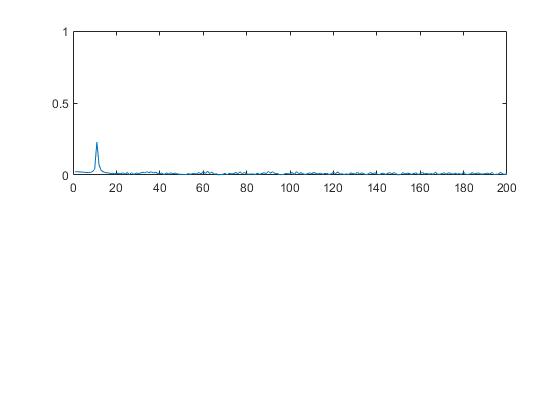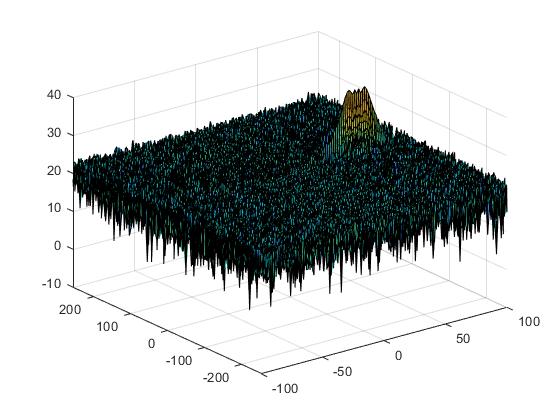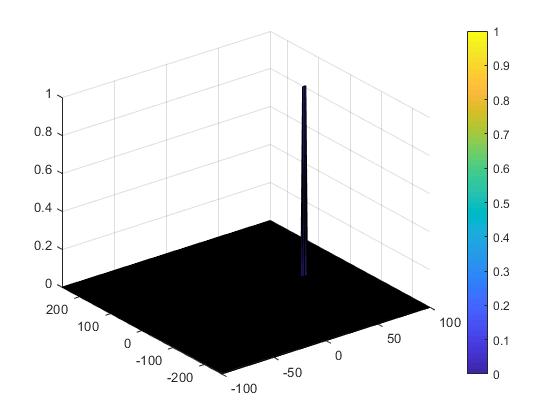See my_radar_target_generation_and_detection.m
Create a CFAR README File
In a README file, write brief explanations for the following:
Implementation steps for the 2D CFAR process.
- Norralized RDM map and copied it to singal_after_thresholding structure
- Designed a loop such that it slides the CUT across this normalized range doppler map by giving margins at the edges for Training and Guard Cells.
- On every iteration summed the signal level within all the training cells.
- Converted the value from logarithmic to linear using db2pow function.
- Averaged the summed values for all of the training cells used
- After averaging converted it back to logarithimic using pow2db.
- Further added the normalized offset to it to determine the threshold.
- Compared the signal under CUT with this threshold. If the CUT level > threshold assign it a value of 1, else equate it to 0.
Selection of Training, Guard cells and offset.
- Twekaed Training, Guard and Offset values to remove spurious targts in normalized RDM map Steps taken to suppress the non-thresholded cells at the edges.
- Zeroed out the cells at the edges that did nto fit into sliding window
%Slide Window through the complete Range Doppler Map
% *%TODO* :
%Select the number of Training Cells in both the dimensions.
Tr = 12;
Td = 5;
% *%TODO* :
%Select the number of Guard Cells in both dimensions around the Cell under
%test (CUT) for accurate estimation
Gr = 4;
Gd = 3;
% *%TODO* :
% offset the threshold by SNR value in dB
offset = 1.4;
% *%TODO* :
%Create a vector to store noise_level for each iteration on training cells
%noise_level = zeros(1,1);
% Use RDM[x,y] as the matrix from the output of 2D FFT for implementing
% CFAR
signal_after_threshodling = RDM/max(max(RDM));
for i = Tr+Gr+1:(Nr/2)-(Gr+Tr)
for j = Td+Gd+1:Nd-(Gd+Td)
%Create a vector to store noise_level for each iteration on training cells
noise_level = zeros(1,1);
% Calculate noise SUM in the area around CUT
for p = i-(Tr+Gr) : i+(Tr+Gr)
for q = j-(Td+Gd) : j+(Td+Gd)
if (abs(i-p) > Gr || abs(j-q) > Gd)
noise_level = noise_level + db2pow(signal_after_threshodling(p,q));
end
end
end
% Calculate threshould from noise average then add the offset
threshold = pow2db(noise_level/(2*(Td+Gd+1)*2*(Tr+Gr+1)-(Gr*Gd)-1));
threshold = threshold + offset;
CUT = signal_after_threshodling(i,j);
if (CUT < threshold)
signal_after_threshodling(i,j) = 0;
else
signal_after_threshodling(i,j) = 1;
end
end
end
% *%TODO* :
% The process above will generate a thresholded block, which is smaller
%than the Range Doppler Map as the CUT cannot be located at the edges of
%matrix. Hence,few cells will not be thresholded. To keep the map size same
% set those values to 0.
signal_after_threshodling(union(1:(Tr+Gr),end-(Tr+Gr-1):end),:) = 0;
signal_after_threshodling(:,union(1:(Td+Gd),end-(Td+Gd-1):end)) = 0;

